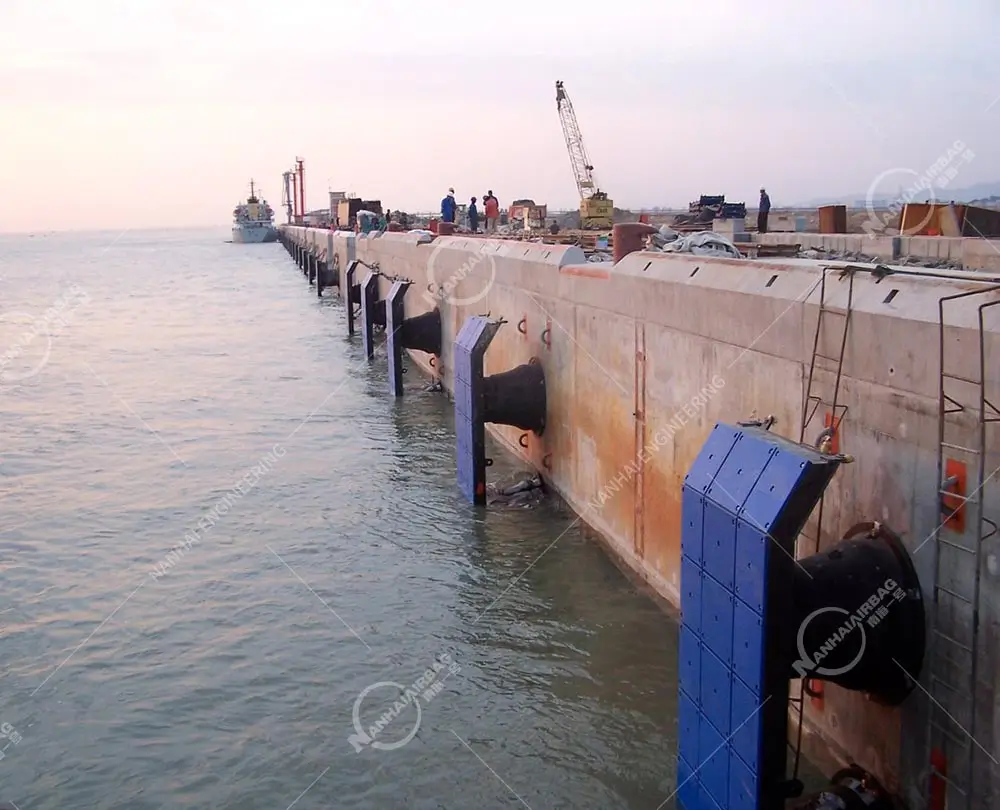Foam Filled Fenders in Naval Operations
06/02/2025What are bridge fenders?
06/02/2025What is a cone fender?
A cone fender is a type of marine fender designed to absorb the kinetic energy of vessels during berthing and mooring operations. Its conical shape allows for efficient energy absorption and deformation, and can withstand deflections of up to 72%, protecting both the vessel and the docking infrastructure from potential damage. Cone fenders can be installed in reverse, which helps save on floor space. This design minimizes the risk of costly repairs and enhances safety for crew members, passengers, and cargo.
Why Are Cone Fenders Essential?
Imagine a massive cargo ship approaching a busy port. Without adequate protection, the impact during docking could damage both the vessel and the quay, leading to expensive repairs and operational delays. Cone fenders act as shock absorbers, ensuring safe and efficient berthing even under challenging conditions. Their ability to handle high-energy impacts makes them indispensable in modern maritime operations.

History of Cone Fenders
In the past, ports often used old tires or solid rubber blocks to protect ships and docks. However, these materials didn’t absorb enough energy and wore out quickly. As ships grew in size, engineers started designing hollow rubber fenders, including cylindrical, cell, and cone fenders. Among them, the cone fender became popular because its special cone shape helps absorb more impact energy and gives better protection.
Key Features of Cone Fenders
- High Energy Absorption: Cone fenders can absorb significant amounts of kinetic energy, reducing the impact force transmitted to the dock.
- Stable Performance: Their conical design provides stability even at large compression angles, ensuring consistent performance.
- Durability: Made from high-quality rubber compounds, cone fenders resist environmental factors like saltwater, UV radiation, and temperature fluctuations.
- Versatility: Suitable for various applications, including ports, harbors, and offshore platforms, accommodating different vessel sizes and types.
Applications of Cone Fenders
Cone fenders are widely used in:
- Commercial Ports: Handling large vessels like tankers and container ships.
- Oil and Gas Terminals: Providing robust protection during the berthing of heavy-duty vessels.
- Cruise Ship Docks: Ensuring passenger safety and vessel integrity during docking.
- Offshore Platforms: Protecting structures from vessel impacts in challenging marine environments.
People Also Ask
What is the difference between cone fenders and cell fenders?
Cone fenders are an evolution of cell fenders, offering higher energy absorption and better performance at large compression angles. Their conical shape provides improved stability and shear resistance.
How long do cone fenders last?
With proper maintenance, cone fenders can have a long service life, often exceeding 15 years, depending on environmental conditions and usage frequency.
Are cone fenders suitable for all vessel types?
Yes, cone fenders are versatile and can accommodate a wide range of vessels, from small boats to large cargo ships, making them suitable for various maritime applications.
